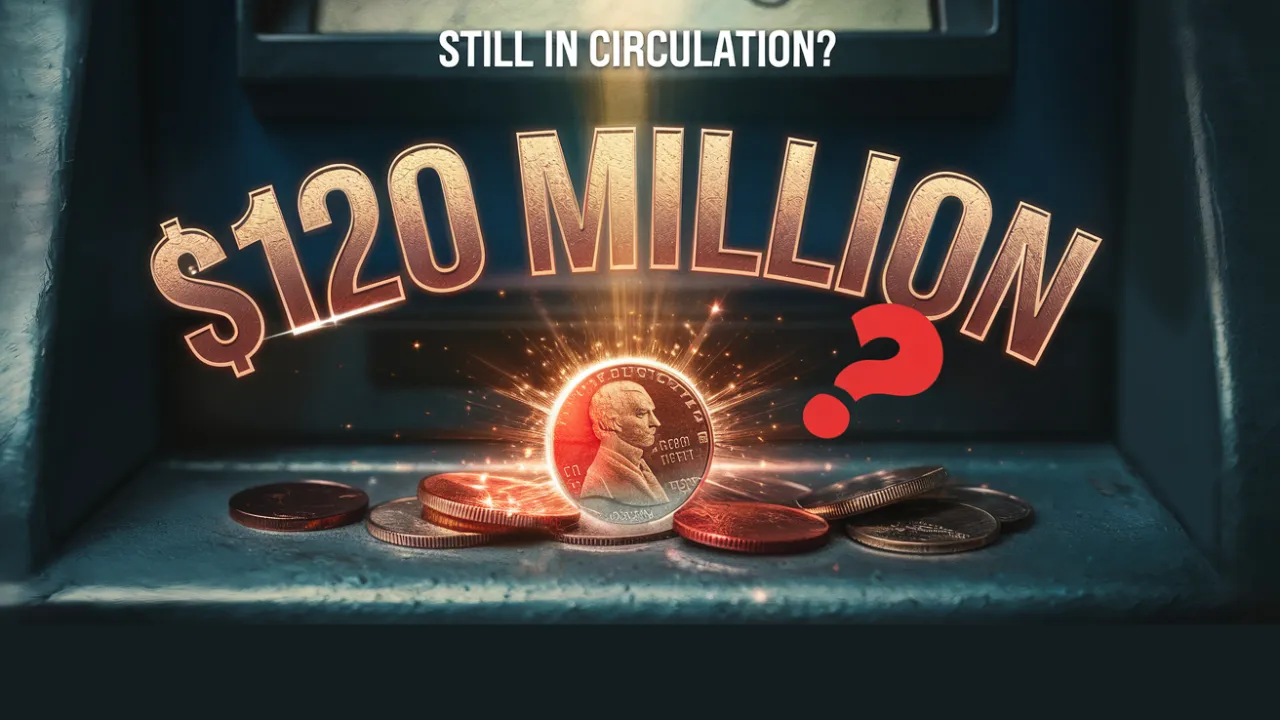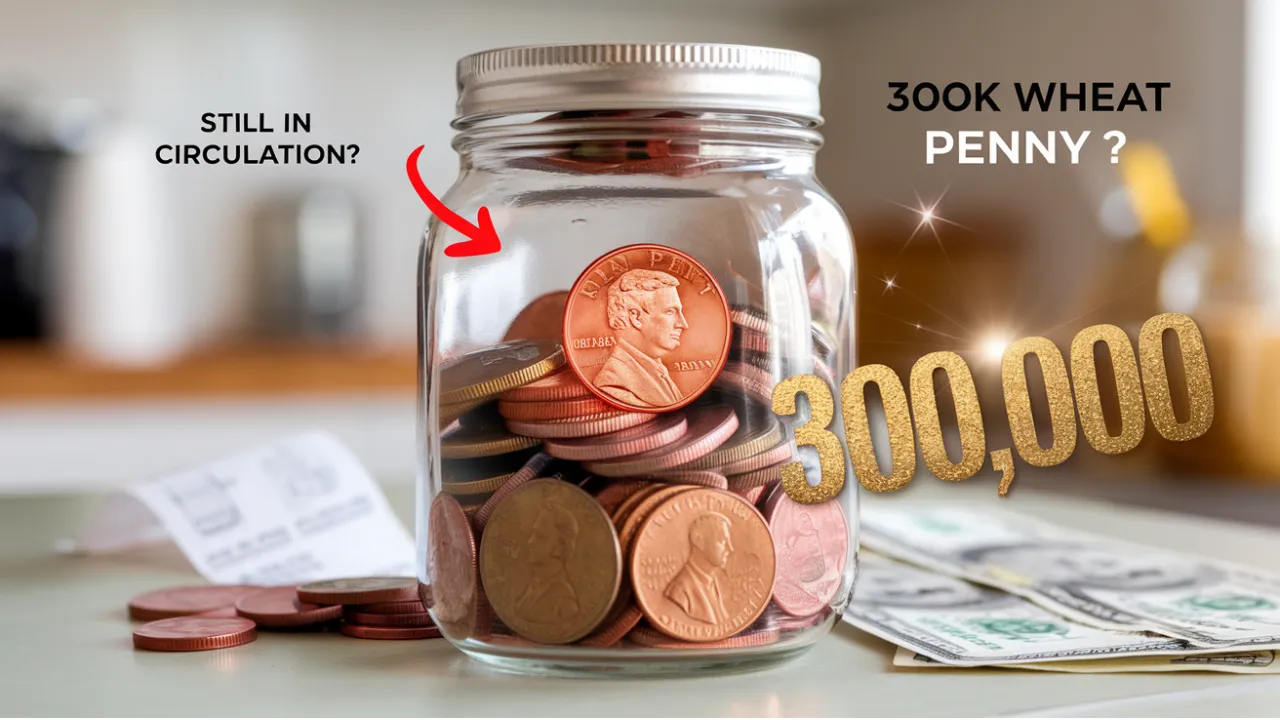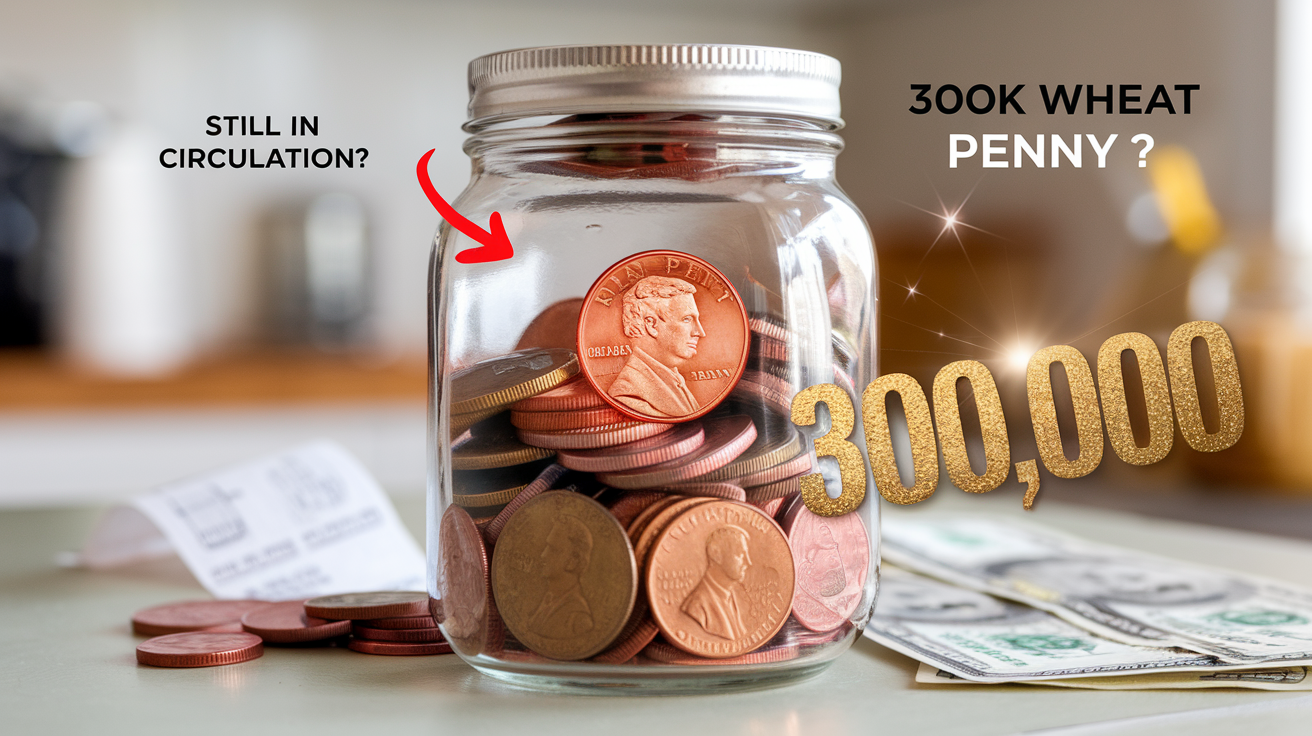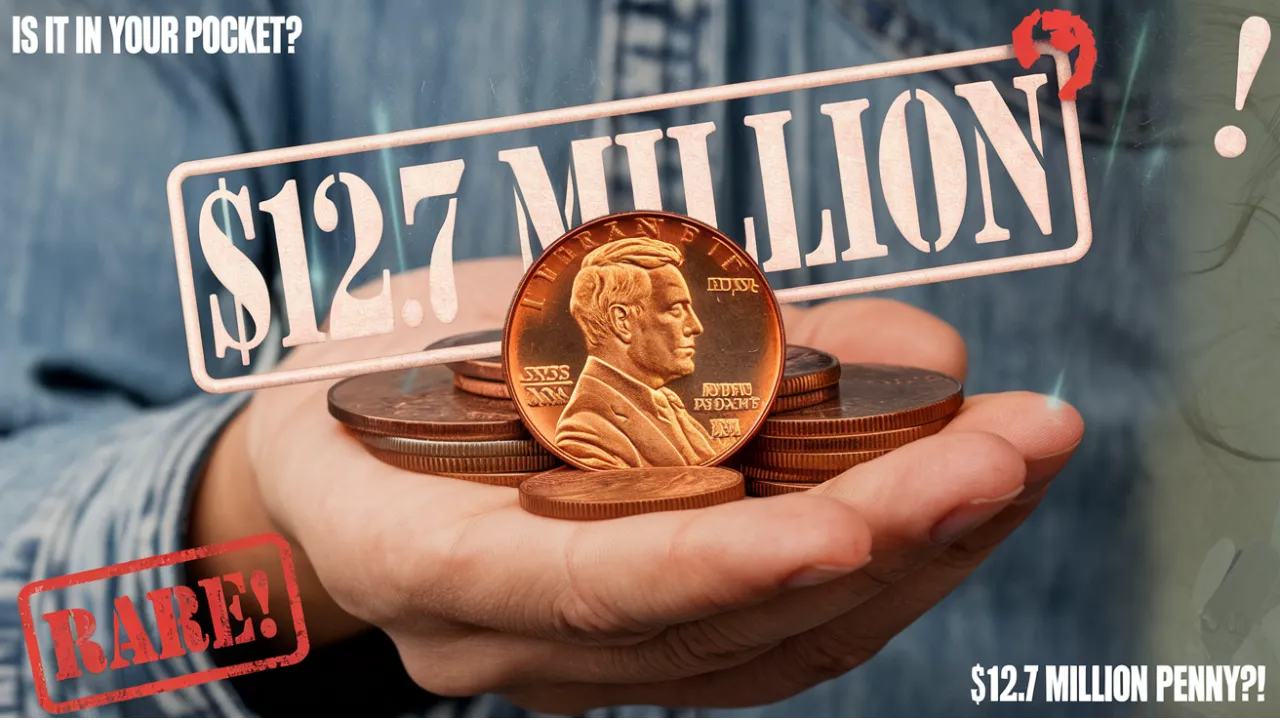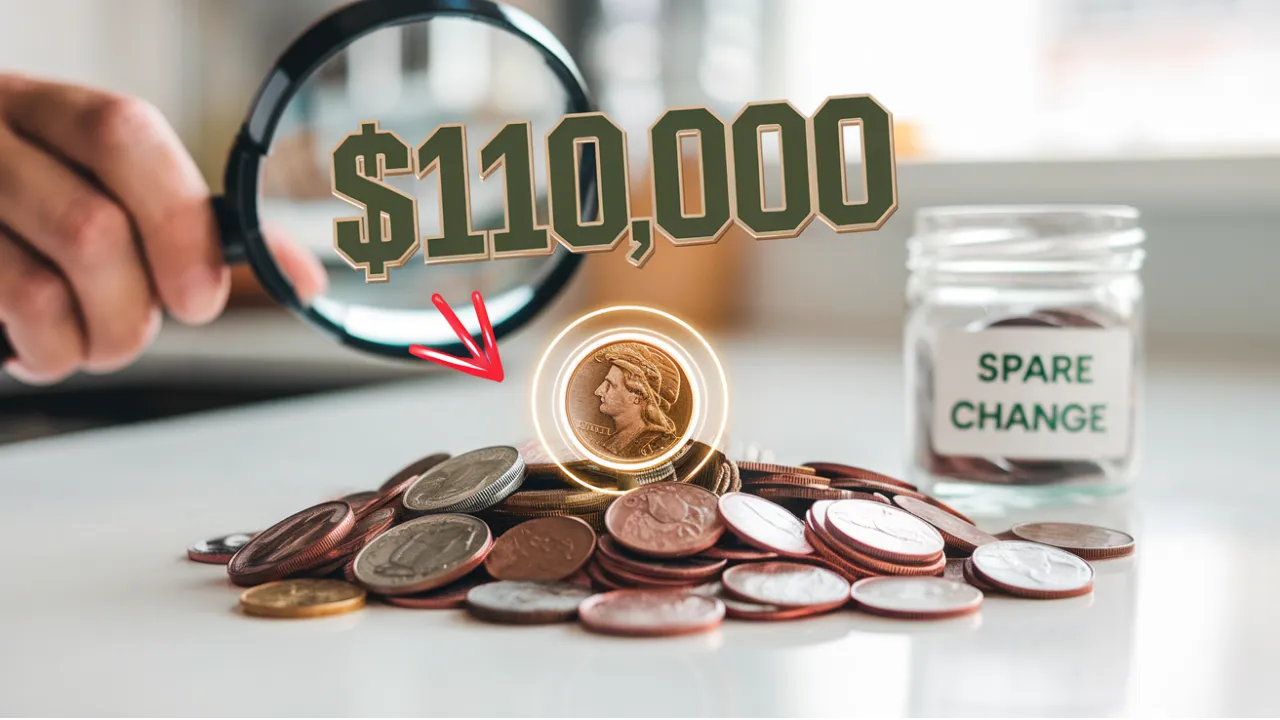The Lincoln Wheat Penny Valued at $120 Million: What if the penny lying unnoticed in your coin jar was actually worth a fortune? That’s not just wishful thinking—it could be the case if you’re lucky enough to find a Lincoln Wheat Penny from 1943 made of copper. One of these rare coins, originally worth just a single cent, has been valued as high as $120 million. This might be the most valuable pocket change in the world.
This article explores the incredible story of how a wartime minting mistake turned an ordinary penny into one of the rarest collectibles in American history. You’ll learn how to spot one, where they might still be hiding, and why this small coin has collectors hunting everywhere.
Quick Facts: Lincoln Wheat Penny Overview
| Feature | Details |
| Coin Name | Lincoln Wheat Penny |
| Rarest Year | 1943 (Copper Version) |
| Estimated Value | Up to $120 Million |
| Composition | Common: Steel; Rare: Copper |
| Reason for Rarity | Minting error during WWII |
| Weight of Copper Version | Approx. 3.11 grams |
| How to Identify | Reddish color, not magnetic, distinct ring sound |
| Number in Existence | Estimated 20–30 genuine pieces |
| Authentication Needed? | Yes – essential due to counterfeits |
| Potential Hiding Places | Old coin jars, flea markets, estate sales, pocket change |
The Humble Beginnings of the Lincoln Wheat Penny
The Lincoln Wheat Penny first made its debut in 1909, celebrating the 100th birthday of President Abraham Lincoln. It became the first U.S. coin to feature a real person, with Lincoln’s profile on the front and two wheat stalks on the back—thus earning the nickname “wheat penny.” Produced in massive numbers at three mints—Philadelphia, Denver, and San Francisco—these pennies became a staple in everyday American life for decades.
How World War II Changed the Penny Forever
When World War II erupted, copper quickly became a critical material for the military. It was used for everything from bullets to communication wiring. To conserve copper for the war effort, the U.S. Mint made a bold switch in 1943—producing pennies out of zinc-coated steel instead. These new steel coins looked silver rather than the usual reddish tone of copper.
But during that transition, a few copper blanks from the previous year accidentally remained in the minting machines, and that’s where this legendary mistake began.
The Accidental Millionaire: The 1943 Copper Penny
Those leftover copper planchets were never supposed to be used. However, when they made their way into the presses, a tiny batch of 1943 pennies came out made entirely of copper rather than steel. Today, only about 20 to 30 of these coins are believed to exist, and collectors go wild over them.
One authentic specimen reportedly fetched up to $120 million, making it possibly the most valuable penny in the world. It’s a perfect example of how a simple production error can create something truly priceless.
Why the 1943 Lincoln Wheat Penny Is So Valuable
The value of these pennies comes down to a combination of rarity, history, and curiosity. Here’s what makes them special:
- Very rare: Fewer than 30 verified examples are known to exist.
- Historical moment: These coins reflect how deeply WWII affected American industry—even down to coins.
- Collector demand: They are on every serious coin collector’s wish list.
- Mint condition adds value: The better the condition, the higher the price.
- Mystery and myth: Their near-mythical status adds even more intrigue.
How to Spot a 1943 Copper Lincoln Wheat Penny
Think you might have a rare one? Here’s how to check:
- Color: Copper coins are a warm reddish-brown, unlike the silver-gray steel ones.
- Weight: Copper ones weigh about 3.11 grams. Steel pennies are lighter at 2.7 grams.
- Magnet test: A steel penny will stick to a magnet. A real copper one won’t.
- Sound test: Drop it—copper has a clearer ring, while steel gives off a dull clink.
Be careful though—fake versions are everywhere, and many are convincing. Some are copper-plated steel or altered coins with fake dates.
Where These Rare Pennies Might Still Be Found
Even though these coins are extremely rare, people have discovered them in unexpected places. Here are some spots where a Lincoln Wheat Penny might still be hiding:
- Inherited coin collections: Sometimes people don’t realize what they have.
- Flea markets and antique shops: Sellers may overlook rare items.
- Old piggy banks and jars: Check grandma’s coin jar—you never know.
- Coin rolls from the bank: Some coin hunters search thousands of pennies in hopes of a rare find.
The chance is slim, but the stories of real people finding valuable coins keep collectors motivated.
Common Counterfeit Tricks to Watch Out For
- Copper-plated steel coins – Stick to a magnet, even if they look copper.
- Altered dates – Some counterfeiters change the “8” in 1948 to look like a “3.”
- Entirely fake coins – Produced using molds or with incorrect dimensions.
Always get expert verification if you suspect you have one.
Tips to Protect Your Rare Find
- Handle with care – Oils from your fingers can damage the surface.
- Store properly – Use a coin holder or protective sleeve.
- Get it authenticated – Use trusted grading services like PCGS or NGC.
- Don’t rush to sell – Take time to understand your coin’s full value.
Beyond Value: What This Coin Teaches Us
The story of the Lincoln Wheat Penny isn’t just about money. It’s about history, mistakes that became miracles, and the way small objects can tell big stories. These coins reflect how deeply war shaped everyday life in America, right down to the smallest coin in your pocket.
They’ve become more than collectibles—they are symbols of history, human error, and the thrill of discovery.
FAQs
What year Lincoln Wheat Penny is worth $120 million?
The 1943 copper version. It’s extremely rare and was minted by mistake during WWII.
How can I test if my 1943 penny is copper?
Use a magnet—steel sticks, copper doesn’t. Also, check the color and weight.
Where can I sell a rare penny?
After authenticating it through a professional grading service, auctions and reputable dealers are best.
Are there many fake 1943 copper pennies?
Yes. There are tons of fakes, so always get professional verification.
Can I still find one today?
While very unlikely, yes—some have shown up in everyday change and old collections.
Final Thought
The idea of a Lincoln Wheat Penny being worth $120 million seems like a dream—but it’s real. These coins are a reminder that history can hide in plain sight, even in the bottom of a drawer or the change in your pocket. If you’ve got some old coins lying around, it might just be time to take a second look.
💬 Have you checked your change recently? Tell us what you’ve found in the comments! And if you love rare finds like this, explore more treasure tales or discover your daily horoscope.
